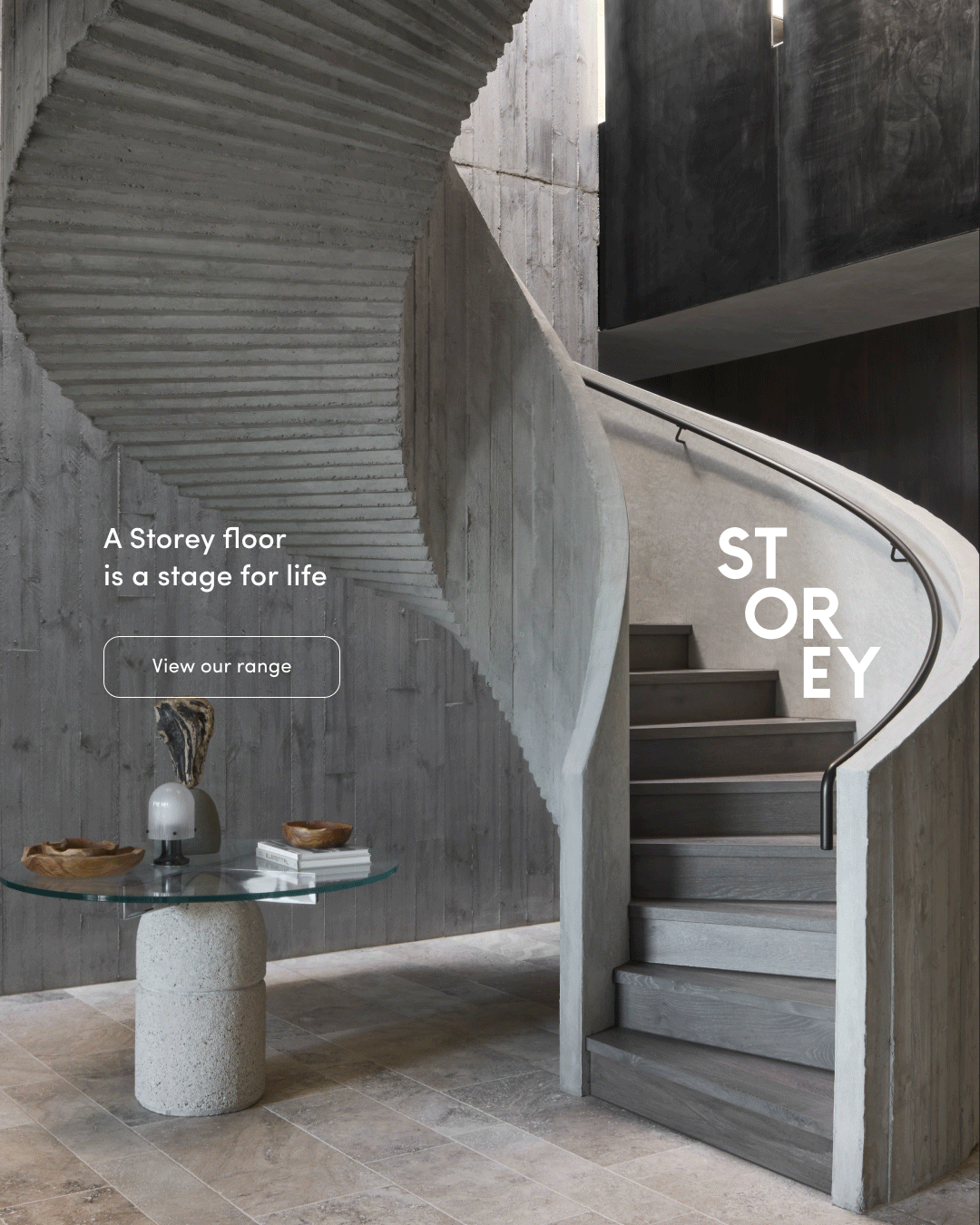
Perch House by pH+ Architects
Perch House is a highly personal home that allows its owners to live freely while embracing the open, natural surroundings.
Tucked away in a quiet suburb on Sydney’s Lower North Shore is Perch House by pH+ Architects. Shielded from the street by a floating steel screen, the residence opens at the rear to embrace the spectacular bush views. Not seeking anything overtly ostentatious, the clients approached pH+ Architects with an open brief. “They didn’t have any hugely preconceived ideas,” says Drew Hamilton, director at pH+ Architects. “The focus was asking us how we would make the most out of this fantastic location.” Subsequently, the home carefully mediates between the garden suburb in which it sits and the natural setting of the adjacent escarpment.
Enriched by its location, the house sits in Castlecrag, an historic suburb that was originally planned by American architects Walter Burley Griffin and Marion Mahony Griffin who first visited the area in 1925. The Griffins designed the layout of the streets as well as 15 individual houses – a feat that is internationally recognised as a prime example of intermingling urban planning with nature. The new home works within this historic context, sensitively nestled within the suburb while dramatically engaging with the escarpment to the north. “A principal move was to elevate the main primary accommodation onto the upper level to enjoy the best views,” says Hamilton. “The living, dining, kitchen, [main] bedroom suite and office are set on the upper level, which then cantilevers four metres out over a sandstone cliff below, allowing these spaces to then spill out to an elevated terrace, framing dramatic views of the escarpment and harbour beyond.”
While the home takes full advantage of the site’s position, its relationship to the suburb is more guarded. Given the topography of the site, the elevated upper floor sits level with the street affording direct access via a pedestrian bridge but also raising potential issues of privacy. This predicament led the architects to suggest shielding the home with a screen. “The idea of veiling the first floor allowed us to create a buffer zone between the dwelling and the street, while carefully balancing outlook with privacy,” explains Hamilton. Within this buffer zone is planting of a more domesticated nature, referencing the suburban context and contrasting the wildness of the escarpment on the other side of the home.
“For the upper level with the more communal spaces, we elected for a lighter, more extroverted palette reflecting the nature of these spaces.”
The floating screen that defines the buffer zone is supported by a series of cantilevered ramps that lead to a roof terrace. Set among rooftop planting and open to the expanse above, “this gives our clients yet another way to connect with their surroundings,” says Hamilton. The ramps also act as a conduit, directing roof water run off down to a dramatic, triangular sandstone plinth concealing a water tank. The plinth lifts the screen above the ground, allowing new landscaping to flow down unimpeded from the street, below the screen and right up to the house.
The materials of the home were directly informed by the bushfire-prone surroundings that required the most stringent fire rating. “This led to an external palette of concrete, steel and stone, which coincided with our clients desire for a low-maintenance home,” says Hamilton. “For the upper level with the more communal spaces, we elected for a lighter, more extroverted palette reflecting the nature of these spaces. In contrast, when you go downstairs, it flips. It’s darker and more introverted, with materials conveying a sense of mass as they frame and focus attention to more immediate greenery within the site.” On the lower level, greenery is in close proximity to the secondary bedrooms, laundry, garage and pool that offers views of the water while being protected by the cantilevered upper floor above.
Perch House is a dwelling in harmony with nature and was created to connect the owners with their surroundings and embrace the Australian idea of indoor-outdoor living. This is achieved both through materiality, with exterior materials continuing into the home, blurring definitions of interior and exterior, and also with spaces and detailing that frame and celebrate the natural environment. The architecture becomes a backdrop and the view is the hero. Throughout the home, large sections of floor-to-ceiling glazing disappear into pockets or beyond the building itself, leaving seamless transitions to outdoor space and views beyond. “Trying to get that continuity so it doesn’t feel like you’re stepping from inside to out was important,” says Hamilton. Perch House is about making the occupants feel connected, giving them varied yet direct relationships to the dramatic location and a home that they can grow old in together.
Architecture and interior design by pH+ Architects. Build by Newmark Constructions. Engineering by Structure Consulting Engineers. Joinery by Interex Custom Joinery. Furniture supplied by Spence & Lyda, Top 3 By Design, Tait, Coco Republic, Pedulla Studio, Franka and Bednest. Rugs by The Rug Establishment. Artwork by Marisa Purcell. Artwork supplied by Grainger Gallery and Curatorial & Co. Accessories by The DEA Store, Parterre, In The Sac and Stylecraft.

![Book Flatlay Cover Front Transparent Trio[1]](https://d31dpzy4bseog7.cloudfront.net/media/2024/06/07080212/Book_Flatlay_Cover_Front_Transparent_Trio1.png)
































